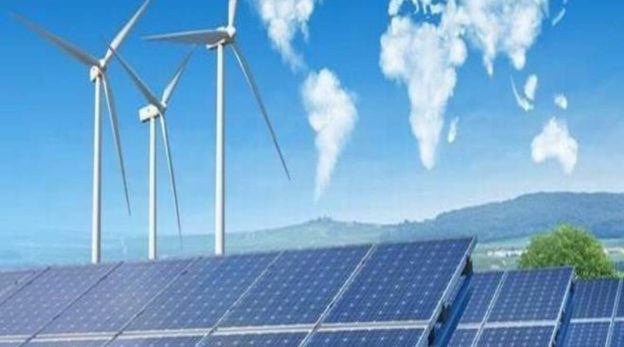There is a need for a dedicated entity to deal with challenges renewable energy faces in India
The year 2022 could be a pivotal one for India’s energy transition. Recently, some of India’s biggest energy companies—Reliance Industries Ltd, Adani Group and NTPC Ltd—had announced massive investments in renewable energy (RE), mostly solar, to herald their transition to a low-carbon future. Further, according to the CEEW Centre for Energy Finance, in 2021, Indian RE companies raised a record $5.9 billion through ‘green bonds’ from overseas debt markets. In spite of these positive signals, the task ahead remains herculean. Since 2016, the average rate of RE deployment in India has been around 10 GW per annum. This has to almost quadruple if renewables were to constitute at least 85 per cent of the government’s target of setting up 500 GW of clean energy capacity by 2030. Could the upcoming Union Budget unveil enabling policies and remove roadblocks that help accelerate India’s RE deployment in the coming years?
Through the last decade, India has been at the forefront of adopting innovative approaches and solutions to boost the prospects of its renewable energy sector. Of all the measures taken, three proved to be game-changers: tariff bundling to make solar an acceptable option for electricity distribution companies (discoms); promoting solar parks to achieve scale and speed of deployment; and instituting payment security mechanisms to de-risk investments in RE projects. More recently, regulators implemented new electricity trading platforms such as the Real Time Market (RTM) to aid grid management. As we prepare for the decade-long marathon, we recommend three critical priorities that must form the core of the next phase of India’s energy transition.
First, build a diverse technology mix. In recent years, utility-scale solar PV has emerged as the most preferred technology choice as policymakers targeted cost reduction and economies of scale. However, India also has huge potential to promote alternative technologies and applications such as rooftop and floating solar, decentralised onshore wind, offshore wind, small hydro and biomass power. For perspective, decentralised onshore wind projects of upto 50 MW could tap underutilised state transmission networks in windy states beyond Tamil Nadu and Gujarat, which host almost 50% of the total installed wind power capacity today.
Similarly, floating solar has huge potential, exceeding 2,400 GW in the eastern states, which are otherwise not attractive for onshore wind or utility-scale solar. Efficient rooftop solar projects could offer benefits to consumers in the north-east. Diversifying our technology mix would not only offer flexibility and resilience to our power system, but also deliver the desired socio-economic benefits by bringing the transition closer to the communities.
Second, support demand creation for renewables. Today, financially stressed electricity distribution companies find it difficult to increase the share of renewables in their portfolios. Only four states met or surpassed their renewable purchase obligation in 2019-20. Adverse policy measures in some states have made it difficult for large consumers to shift to cheaper RE sources. For example, only 12% of the total installed utility-scale solar capacity is under open access today. However, with advancements in storage technologies and declining costs, it would be possible for consumers to reduce the contracted load from the grid. Therefore, discoms could take advantage of technological and market developments to serve the needs of their high-paying consumers.
Further, freeing discoms from contracts with old and inefficient coal plants could create the headroom required to procure renewable energy and other flexible resources through market platforms. Partially indexed RE tariffs could be another immediate solution to increase the attractiveness of RE for discoms and developers alike.
Third, transform institutions. Meeting the 2030 targets would require us to fast-track project development, improve implementation efficiency, strengthen procurement processes, and enhance transparency on RE resource potential and grid infrastructure. It also calls for creation of mechanisms for a quicker resolution to challenges on power purchase contracts, payment delays, and reduction in power generation. A dedicated entity, mandated to deal with these issues, could ensure coordinated and systematic development of projects. To this end, the Solar Energy Corporation of India could be empowered to become the National Renewable Energy Corporation (NREC). NREC could act as the single point entity for renewable energy power producers. NREC would also facilitate improved Centre-state coordination and a diverse RE technology mix. This would help build trust among existing and potential investors.
At COP26, India once again showed its commitment towards real climate action. In the 2022 Union Budget, India must back its ambition with actions. Success in creating enabling frameworks would give new wings to India’s renewable energy story.
https://www.financialexpress.com/opinion/achieving-the-clean-energy-target/2407820/?action=profile_completion&





